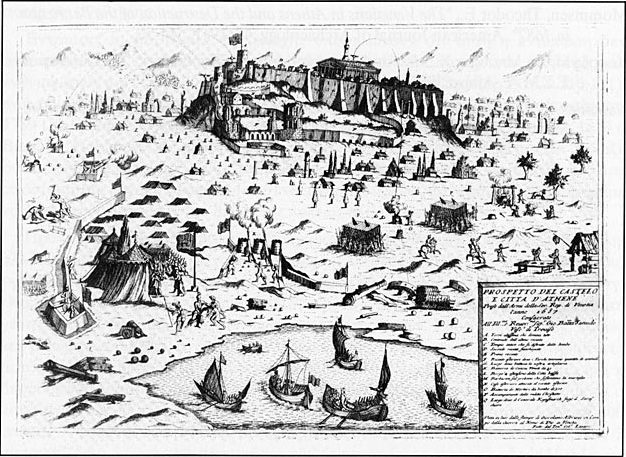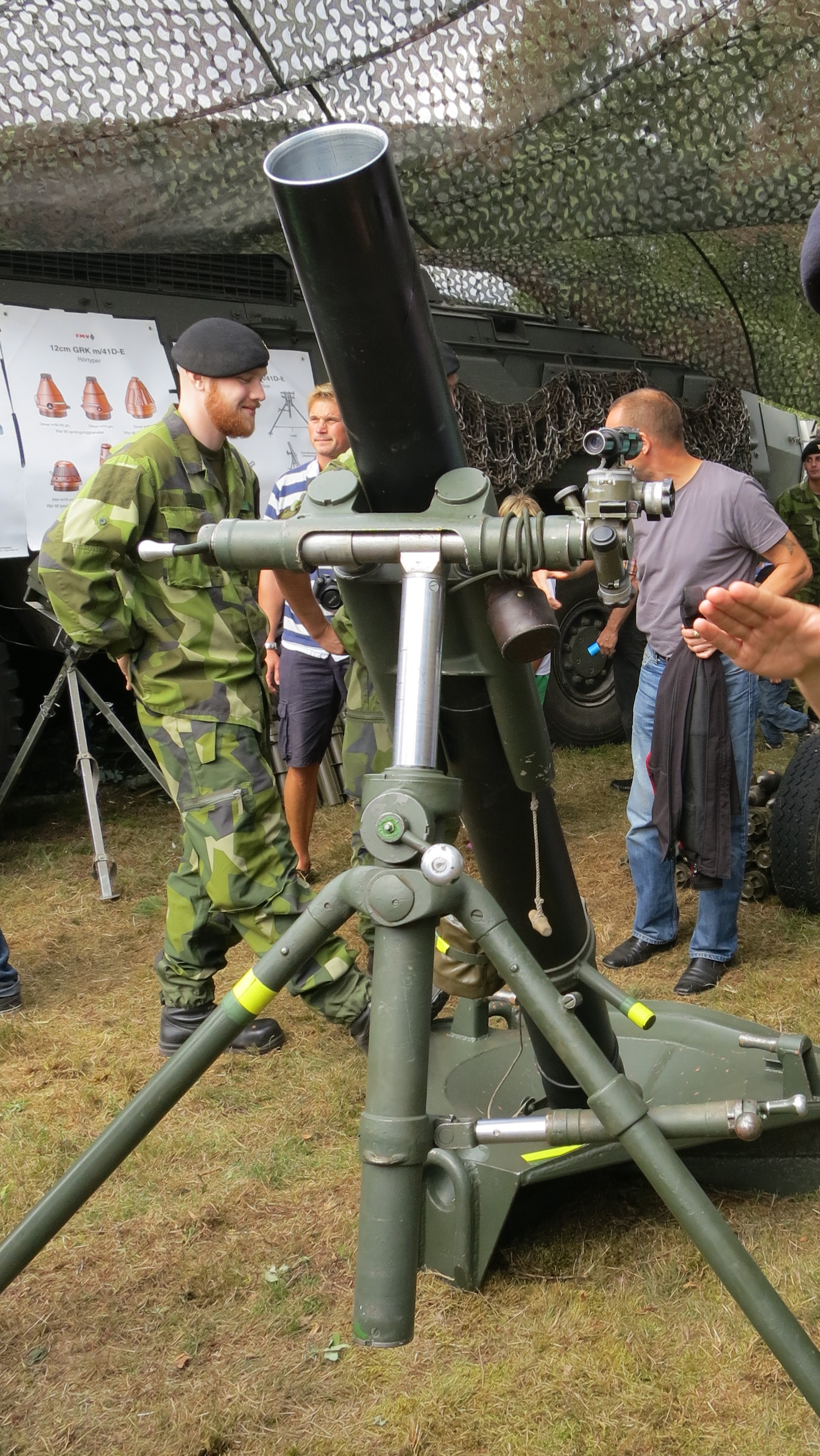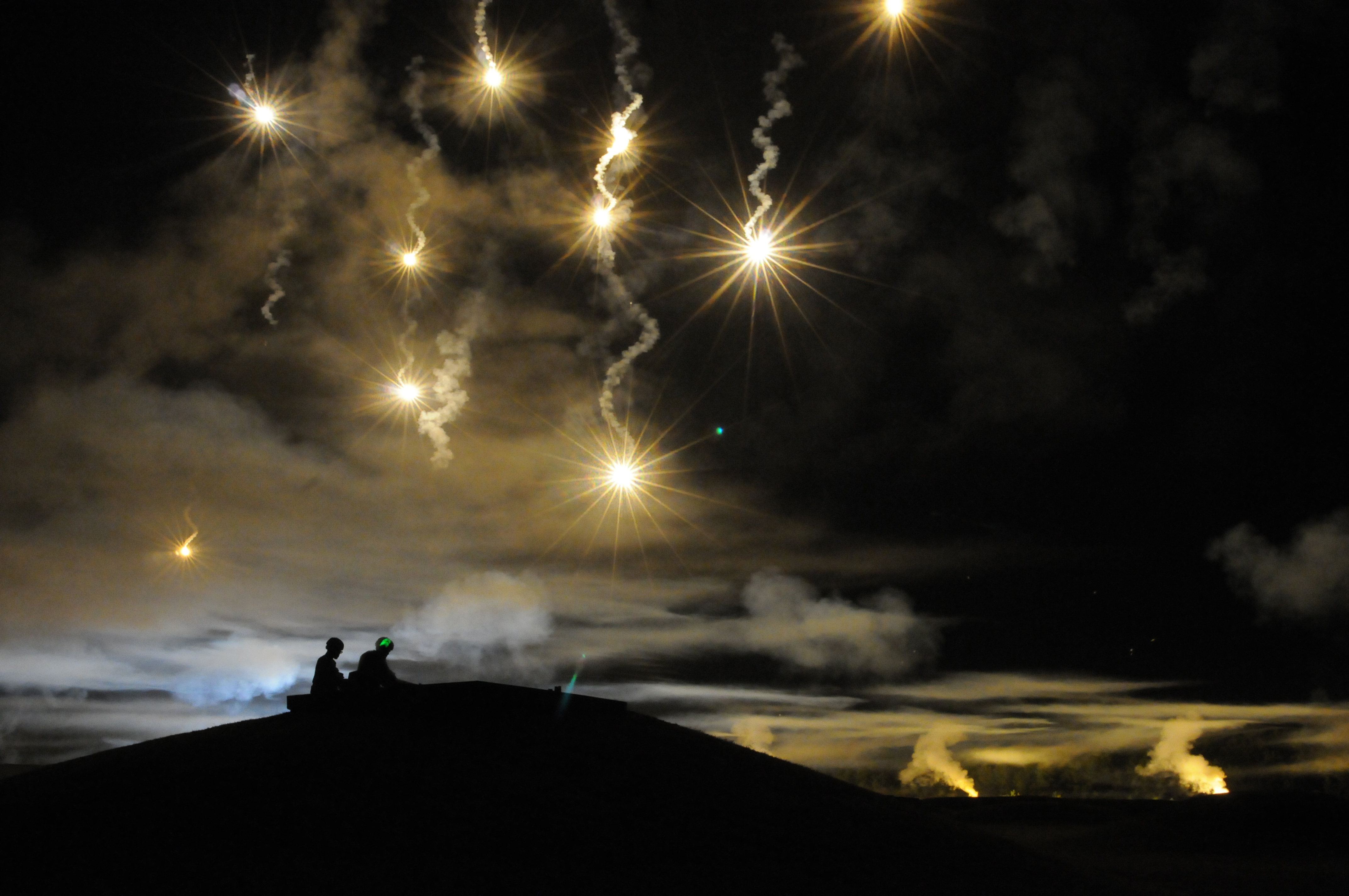|
M120 120 Mm Mortar
The Soltam K6 is a 120 mm (4.75 inch) mortar that was developed by Soltam Systems of Israel. It is the long-range version of the Soltam K5 and has replaced older systems, such as the M30, in several armies, including the United States Army. It is much lighter than the M30, has a greater range, and can sustain a rate of fire of four rounds per minute, while the M30 could sustain only three. Design overview The K6 fires fin-stabilized ammunition from a smoothbore barrel. Unlike its smaller-ammunition cousins, the 81 mm and 60 mm mortars, the fin blades of the ammunition fired from the M120 are not canted. Thus, no spin is imparted to the projectile in flight. Although heavy mortars require trucks or tracked mortar carriers to move them, they are still much lighter than field artillery pieces. They outrange light and medium mortars, and their explosive power is much greater. An improved version is known as the K6A3. High-explosive rounds fired by the M120 weigh a ... [...More Info...] [...Related Items...] OR: [Wikipedia] [Google] [Baidu] |
Mortar (weapon)
A mortar today is usually a simple, lightweight, man-portable, Muzzleloader, muzzle-loaded cannon, consisting of a Smoothbore, smooth-bore (although some models use a Rifling, rifled barrel) metal tube fixed to a base plate (to spread out the recoil) with a lightweight bipod mount and a Sight (device), sight. Mortars are typically used as indirect fire weapons for close fire support with a variety of ammunition. Historically mortars were heavy Siege, siege artillery. Mortars launch explosive shell (projectile), shells (technically called Bomb, bombs) in high arching Projectile motion, ballistic trajectories. History Mortars have been used for hundreds of years. The earliest reported use of mortars was in Korea in a 1413 naval battle when Korean gunsmiths developed the ''wan'gu'' (gourd-shaped mortar) (완구, 碗口). The earliest version of the ''wan'gu'' dates back to 1407. Ch'oe Hae-san (1380–1443), the son of Ch'oe Mu-sŏn (1325–1395), is generally credited with inventi ... [...More Info...] [...Related Items...] OR: [Wikipedia] [Google] [Baidu] |
M1100 Trailer
M11 or M-11 may refer to: Aviation * Miles M.11 Whitney Straight, a 1936 two-seater light aircraft * Shvetsov M-11, an aircraft engine produced in the Soviet Union Science * Messier 11 (M11), an open star cluster also known as the Wild Duck Cluster * Mathieu group M11 in the mathematical field of group theory * Ritter M11 UltraClave, a model of autoclave made by Midmark Transportation * M-11, a state highway in the metropolitan area of Grand Rapids, Michigan *M11 (East London), a Metropolitan Route in East London, South Africa * M11 (Cape Town), a Metropolitan Route in Cape Town, South Africa *M11 (Johannesburg), a Metropolitan Route in Johannesburg, South Africa * M11 (Pretoria), a Metropolitan Route in Pretoria, South Africa * M11 (Durban), a Metropolitan Route in Durban, South Africa * M11 (Bloemfontein), a Metropolitan Route in Bloemfontein, South Africa * M11 (Port Elizabeth), a Metropolitan Route in Port Elizabeth, South Africa * M11 motorway in England * M11 motorway (P ... [...More Info...] [...Related Items...] OR: [Wikipedia] [Google] [Baidu] |
120 Krh/40
120 Krh/40 is a 120 mm mortar developed by the Finnish company Tampella (now Patria Vammas). Use in Sweden The 120 Krh/40 first entered service in 1940 after being ordered the previous year by Finland. It was exported to Sweden between 1941 and 1944 and later produced under license there. A total of 219 were exported by Tampella. The Swedish military calls them ''12 cm m/41'' and they have continued to serve as the standard heavy mortar of the Swedish Army. In 1956, their base-plates were replaced by Swedish-manufactured Hotchkiss-Brandt M-56 baseplates. , 165 m/41D are still in service in the Estonian Land Forces and 22 are held by the Lithuanian Armed Forces. They got a major increase in lethality when the STRIX top attack anti armour round was introduced in the 1990s; it is a smart weapon that homes in on the IR signature of armoured vehicles. See also * Soltam M-65 – an Israeli copy of Krh/40 using a new base plate * Soltam K6 The Soltam K6 is a 120 ... [...More Info...] [...Related Items...] OR: [Wikipedia] [Google] [Baidu] |
International Institute For Strategic Studies
The International Institute for Strategic Studies (IISS) is an international research institute or think tank focusing on defence and security issues. Since 1997, its headquarters have been at Arundel House in London. It has offices on four continents, producing data and research on questions of defence, security and global affairs, publishing publications and online analysis, and convening major security summits. ''The Guardian'' newspaper has described the IISS as ‘one of the world’s leading security think tanks.’ The current Director-General and Chief Executive is Bastian Giegerich while Sir John Chipman is the Executive Chairman. The 2017 Global Go To Think Tank Index ranked IISS as the tenth-best think tank worldwide and the second-best Defence and National Security think tank globally, while Transparify ranked it third-largest UK think tank by expenditure, but gave it its lowest rating, describing it as deceptive, on funding transparency. Research The institu ... [...More Info...] [...Related Items...] OR: [Wikipedia] [Google] [Baidu] |
Flare
A flare, also sometimes called a fusée, fusee, or bengala, bengalo in several European countries, is a type of pyrotechnic that produces a bright light or intense heat without an explosion. Flares are used for distress signaling, illumination, or defensive countermeasures in civilian and military applications. Flares may be ground pyrotechnics, projectile pyrotechnics, or parachute-suspended to provide maximum illumination time over a large area. Projectile pyrotechnics may be dropped from aircraft, fired from rocket or artillery, or deployed by flare guns or handheld percussive tubes. Origin The earliest recorded use of gunpowder for signaling purposes was the 'signal bomb' used by the Chinese Song dynasty, Song Dynasty (960–1279) as the Mongol-led Yuan dynasty, Yuan Dynasty (1271–1368) besieged Yangzhou in 1276. These soft-shelled bombs, timed to explode in midair, were used to send messages to a detachment of troops far in the distance. Another mention of the signal ... [...More Info...] [...Related Items...] OR: [Wikipedia] [Google] [Baidu] |
Infrared
Infrared (IR; sometimes called infrared light) is electromagnetic radiation (EMR) with wavelengths longer than that of visible light but shorter than microwaves. The infrared spectral band begins with the waves that are just longer than those of red light (the longest waves in the visible spectrum), so IR is invisible to the human eye. IR is generally (according to ISO, CIE) understood to include wavelengths from around to . IR is commonly divided between longer-wavelength thermal IR, emitted from terrestrial sources, and shorter-wavelength IR or near-IR, part of the solar spectrum. Longer IR wavelengths (30–100 μm) are sometimes included as part of the terahertz radiation band. Almost all black-body radiation from objects near room temperature is in the IR band. As a form of EMR, IR carries energy and momentum, exerts radiation pressure, and has properties corresponding to both those of a wave and of a particle, the photon. It was long known that fires e ... [...More Info...] [...Related Items...] OR: [Wikipedia] [Google] [Baidu] |
Explosive Material
An explosive (or explosive material) is a reactive substance that contains a great amount of potential energy that can produce an explosion if released suddenly, usually accompanied by the production of light, heat, sound, and pressure. An explosive charge is a measured quantity of explosive material, which may either be composed solely of one ingredient or be a mixture containing at least two substances. The potential energy stored in an explosive material may, for example, be: * chemical energy, such as nitroglycerin or grain dust * pressurized gas, such as a gas cylinder, aerosol can, or boiling liquid expanding vapor explosion * nuclear energy, such as in the fissile isotopes uranium-235 and plutonium-239 Explosive materials may be categorized by the speed at which they expand. Materials that detonate (the front of the chemical reaction moves faster through the material than the speed of sound) are said to be "high explosives" and materials that deflagrate are sai ... [...More Info...] [...Related Items...] OR: [Wikipedia] [Google] [Baidu] |
White Phosphorus Munitions
White phosphorus munitions are weapons that use one of the common allotropes of the chemical element phosphorus. White phosphorus is used in smoke, illumination, and incendiary munitions, and is commonly the burning element of tracer ammunition. Other common names for white phosphorus munitions include ''WP'' and the slang terms ''Willie Pete'' and ''Willie Peter'', which are derived from ''William Peter'', the World War II phonetic alphabet rendering of the letters ''WP''. White phosphorus is pyrophoric (it is ignited by contact with air); burns fiercely; and can ignite cloth, fuel, ammunition, and other combustibles. White phosphorus is a highly efficient smoke-producing agent, reacting with air to produce an immediate blanket of phosphorus pentoxide vapour. Smoke-producing white phosphorus munitions are very common, particularly as smoke grenades for infantry, loaded in defensive grenade launchers on tanks and other armoured vehicles, and in the ammunition allotment for a ... [...More Info...] [...Related Items...] OR: [Wikipedia] [Google] [Baidu] |
Smoke Bomb
A smoke bomb is a firework designed to produce a large amount of smoke upon ignition. History Early Japanese history saw the use of a rudimentary form of the smoke bomb. Explosives were common in Japan during the Mongol invasions of the 13th century. Soft cased hand-held bombs were later designed to release smoke, poison gas, and shrapnel made from iron and pottery. The modern smoke bomb was created in 1848, by the British inventor Robert Yale. He developed 17th-century Chinese-style fireworks and later modified the formula to produce more smoke for a longer period. Colored smoke devices use a formula that consists of an oxidizer (typically potassium nitrate, KNO3), a fuel (generally sugar), a moderator (such as sodium bicarbonate) to keep the reaction from getting too hot, and a powdered organic dye. The burning of this mixture boils the dye and forces it out of the device, where it condenses in the atmosphere to form a smoke of finely dispersed particles. Home-made s ... [...More Info...] [...Related Items...] OR: [Wikipedia] [Google] [Baidu] |
Indefinite Delivery/indefinite Quantity
In U.S. Federal government contracting, IDIQ is an abbreviation of the term indefinite delivery/indefinite quantity. This is a type of contract that provides for an indefinite quantity of supplies or services during a fixed period of time. The legal origin of IDIQ contracts is the Federal Acquisition Regulation (FAR) section 16.504(a) (). IDIQs are also sometimes called "Task Orders" or "Delivery Order Contracts." IDIQ contracts are a subtype of Indefinite Delivery Contract (IDC), which is a "vehicle that has been awarded to one or more vendors to facilitate the delivery of supply and service orders." Usage IDIQ contracts are most often used for on-call service contracts, Architect-Engineering (A-E) services, and job order contracting. Awards are usually for a specified number of base years with renewal options for additional years. These contracts typically do not exceed a total of five years in duration. The government places delivery orders (for supplies) or task orders (for s ... [...More Info...] [...Related Items...] OR: [Wikipedia] [Google] [Baidu] |
Elbit Systems
Elbit Systems Ltd. is an Israel-based international military technology company and defense contractor. Founded in 1966 by Elron, Elbit Systems is the primary provider of the Israeli military's land-based equipment and unmanned aerial vehicles. It is an important company within the defense industry of Israel. Elbit Systems also has subsidiary factories around the world, and sells its products to various countries' militaries. At its subsidiary factories in the United Kingdom and the United States, the company has faced protests for its support of the Israeli military in the ongoing Israeli–Palestinian conflict. The company has also been divested from by international investment firms due to its involvement in the conflict. In 2022, Elbit Systems reported having 18,407 employees, with most of them based in Israel. Elbit Systems' shares are traded on the Tel Aviv and Nasdaq stock exchanges. History Elbit Systems was founded in 1966 by Elron Electronic Industries ... [...More Info...] [...Related Items...] OR: [Wikipedia] [Google] [Baidu] |







